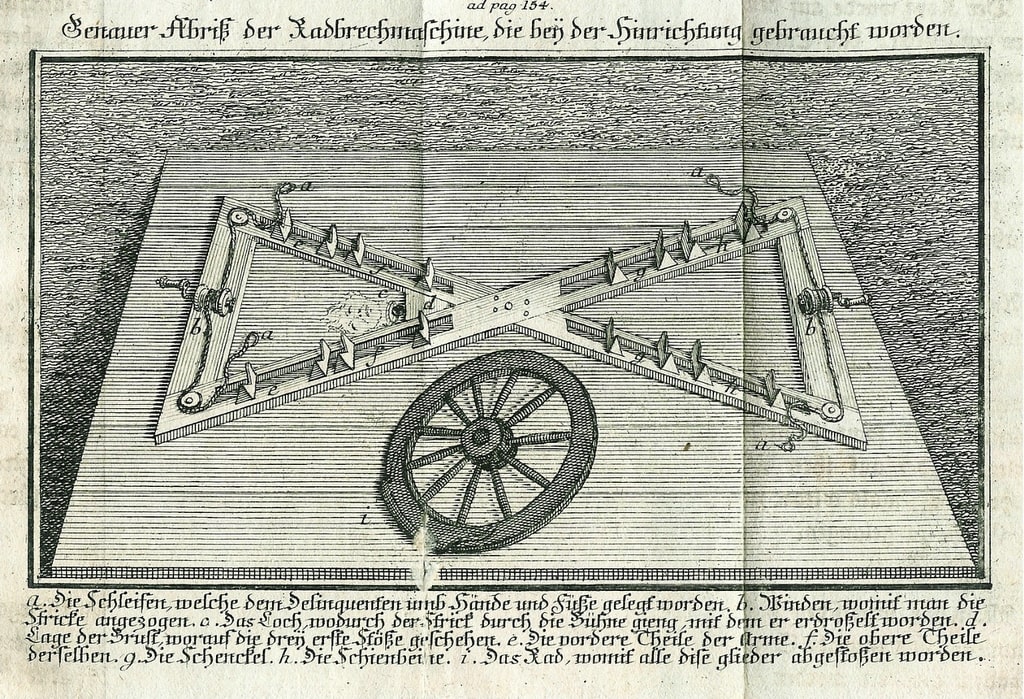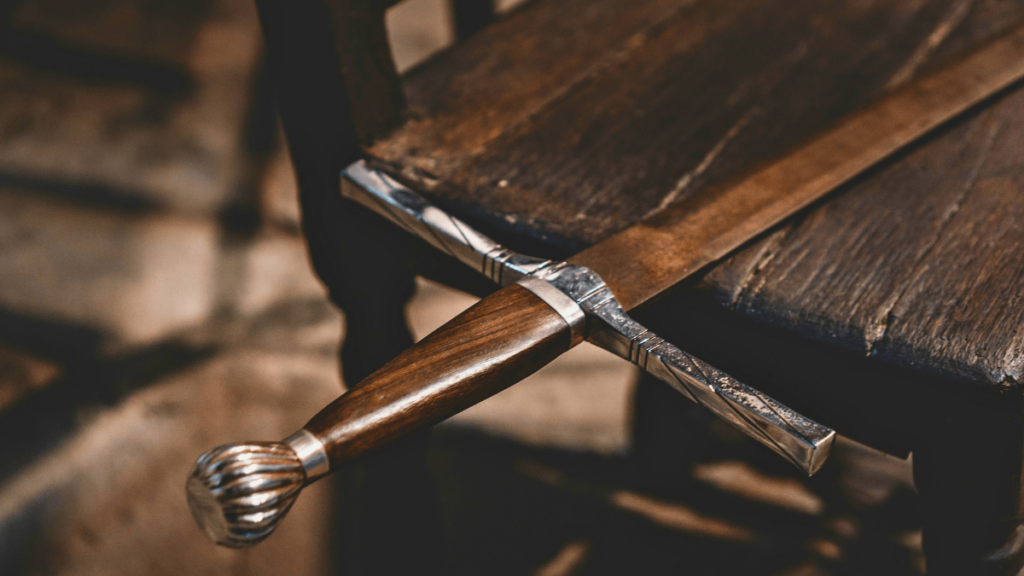The Middle Ages was, it will surprise nobody to learn, a really shitty time to be alive. Between non-existent hygiene standards, horrific plagues, and roving gangs of black-toothed murder-r*pists (if Game of Thrones is the historical document that we suspect it is), it just kinda sucked to be… well, almost anyone.
Even the upper classes of the Medieval era were not immune to having a really shitty time, given all the backstabbing, poisonings, house arrests, and such.
One thing that was a guaranteed terrible time for pretty much anyone –highborn or low – was all the medieval executions. They had no qualms at all about stringing a motherfucker up in the Middle Ages, and getting strung up is what happened if you were lucky.
”Even though it sometimes went awry, however, people generally agreed that it was still better than getting your dick cut off and burnt in front of you.”
If you’re thinking, “That doesn’t sound lucky at all,” that’s because you’re probably unaware of the various methods by which the medieval authorities dispatched the condemned.
These guys got very, very creative with how they executed their victims. It’s not for no reason that Marsellus Wallace promised to “get medieval” on the luckless full-time sheriff and part-time r*pist Z’s ass. It’s because he was going to do very, very nasty things.
Nasty things that I’d be more than happy to lay out for you in this very article, dear reader. Join us as we look at the most horrific execution methods in medieval England.
Breaking On The Wheel
We’re coming straight outta the gate with some fucking nasty shit here. Breaking on the wheel, or “wheeling,” involved taking a huge carriage wheel – sometimes modified with spikes or metal rims to enhance its brutality – and beating the shit out of the hapless victim.

Said beating was not, typically, meant to be swift or merciful. The executioner would tend to start by bringing the wheel down directly on the shinbones of the condemned, shattering them quite thoroughly before moving on the upper legs and the arms. After this, the victim would have their broken limbs threaded through the spokes and would be left on public display until they expired.
The wheel was more common on the continent than in the British Isles, but it was used in Britain, with one notable victim – a man named Robert Weir – for killing his lord and master, one John Kincaid. Brits may also be familiar with the firework known as a “Catherine Wheel”, which is named for the execution tool.
Hanging, Drawing And Quartering
If you’ve seen Braveheart, then you’re already familiar with this one. Mel Gibson’s now-hackneyed cry of “FREEEEEDOMMMM!” occurs at the culmination of this particularly brutal form of execution, with the last part – the quartering – wisely left to the viewer’s imagination.
The victim was first attached to a wicker hurdle before being dragged through the streets to the place of execution. Following this, they underwent the ‘hanging’ part of the execution, which was less the “sudden drop and a short stop” that most of us think when we think of hanging, and more a slow, torturous process designed to cause as much suffering as possible.
Following this, the condemned was “drawn”, which in this case means “disembowelled”. Male victims were also often emasculated, which doesn’t mean people laughed at how small their dick was – it meant their dick was cut off.
If the victim was still alive after all that, they got to watch their innards being burnt in front of them because medieval England really was an insane horror show. Their body was then decapitated, and the remainder were cut into four pieces (“quartered”). In Mel Gibson William Wallace’s case, the various parts were sent to the four corners of the land as a warning.
Beheading
Though executions were no walk in the park for anyone during the Middle Ages, they were slightly better for noble people, as beheading – seen as quicker and more merciful than hanging – was generally reserved for them.

Decapitation took different forms in different countries. In Germany, they used something called the Fallbeil (falling axe), while the French preferred the Guillotine method of head removal, which needs no elaboration here.
For the English, however, they saw no need to mess with a classic – the condemned’s head was laid out on a wooden block, and their head was struck off with a bearded axe.
Beheadings were not always a smooth and straightforward affair. When Mary Queen of Scots was decapitated, the headsman missed her neck with the first blow, striking the back of her head, and then failed to completely decapitate her on the second swing.
Even though it sometimes went awry, however, people generally agreed that it was still better than getting your dick cut off and burnt in front of you.
Peine Forte Et Dure
Peine forte et dure doesn’t sound very English, but don’t worry – it’s yet another drawn-out and cruel execution method which, if this list has proven anything, is extremely English.
Peine forte et dure is French for “strong and hard punishment.” If this is sounding a bit like something you might find on a BDSM site, fret not – it actually refers to putting a bunch of stones on someone until they can’t breathe anymore.
The interesting thing about peine forte et dure is that it was not, technically, a method of execution. It was actually a method of coercing suspects who “stood mute” (i.e., didn’t enter a plea) into pleading guilty or innocent.
The reason for this was simple – the estate of defendants who stood mute went to their children, but otherwise, it went to the state.
Peine forte et dure was therefore conceived as a pretty fucked-up way to induce a plea. The reasoning, such as it went, was that if you put a bunch of heavy fucking stones on someone’s chest, then they’re probably gonna do what you want. This worked some of the time, but less than you’d think – many victims of the practice died before giving in, meaning that their kids got their inheritance, and the crush-loving motherfuckers of the state got zip.
Gibbeting
Gibbeting, AKA “hanging in chains,” may not have been the most painful of the executions listed here, but it was certainly one of the most prolonged.

A gibbet is an iron cage that the body of an executed criminal was publicly displayed in, most often as a warning. It was not uncommon for pirates to be gibbeted following their death, usually at the entrance to a bay of the like.
However, it was not always used on criminals who had already been executed. Instead, it was the method of execution. The condemned was simply slapped in the gibbet and left to it. Death came via dehydration, exposure, or a combination of the two.
Death By Boiling
Anyone who’s read the classic ‘Japan, but as imagined by a white libertarian dude’ novel Shogun (or seen the FX TV adaptation) is probably aware of this delightful method of execution.
It’s as simple as it is horrific: drop the victim in boiling water and let events take their course. Or, perhaps even worse – start them off in cold water and slowly boil it. Either way, you’d have to be a truly sadistic piece of shit to do this to another human being.
Speaking of which, it was the English monarch Henry VIII who introduced death by boiling in the UK. In his eternal magnanimousness, however, Henry didn’t inflict it on everyone – only poisoners and those guilty of high treason.
A contemporary account of one such execution – that of a cook who poisoned porridge – reported that the act sickened many of the crowd present, compelling them to leave. Worryingly, however, the same account stated that “many men and women[…] preferred to see the headsman at his work.”
Thankfully, the statute was on the books a mere 16 years, with Henry’s successor repealing it, and poisoners and traitors the country over sighing in relief.
Burning At The Stake
England has a long and really, really fucked-up relationship with burning people to death. Specifically, England has a long and really fucked-up relationship with burning women to death.
That’s right – one of the most barbaric and painful methods of execution was generally reserved for only half of the population.
The reason that women were condemned to death by burning – where a man would be hanged, drawn, and quartered – was, naturally, one of modesty.
Hanging, drawing, and quartering involved nudity, and it would have been improper for a woman to be publicly nude while she was being subjected to a brutal and agonizing execution.
No – much more proper for her to be literally burned to death, a process which one might imagine would involve her clothing getting combusted.
Burning women alive fell out of practice in the 18th century, with some feeling that it might perhaps be more humane to not publicly burn women to kill women before burning them.
Thus, it became practice to strangle them before consigning them to the flames. The last woman to be burned alive, Catherine Hayes, was actually done so by accident – the executioner inadvertently lit the pyre before he strangled her.
And so it was that society never held any super fucking gross attitudes towards women ever again!
Medieval Executions Weren’t For the Faint of Heart
Though this is far from an exhaustive list of execution methods in medieval England, it is, I like to think, a short list of the most horrific.
That said, England itself cannot lay claim to the title of the most balls-to-the-wall, horrifyingly sadistic method of execution ever conceived. For that, you probably want scaphism (don’t google it. Seriously, we’re warning you).
On that cheery note, have a great day, and thank every God ever named that you don’t live in 14th-century England!


